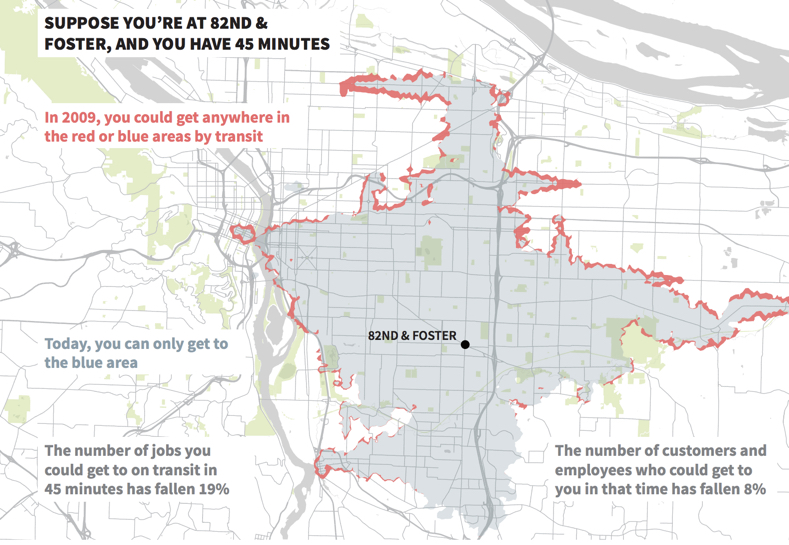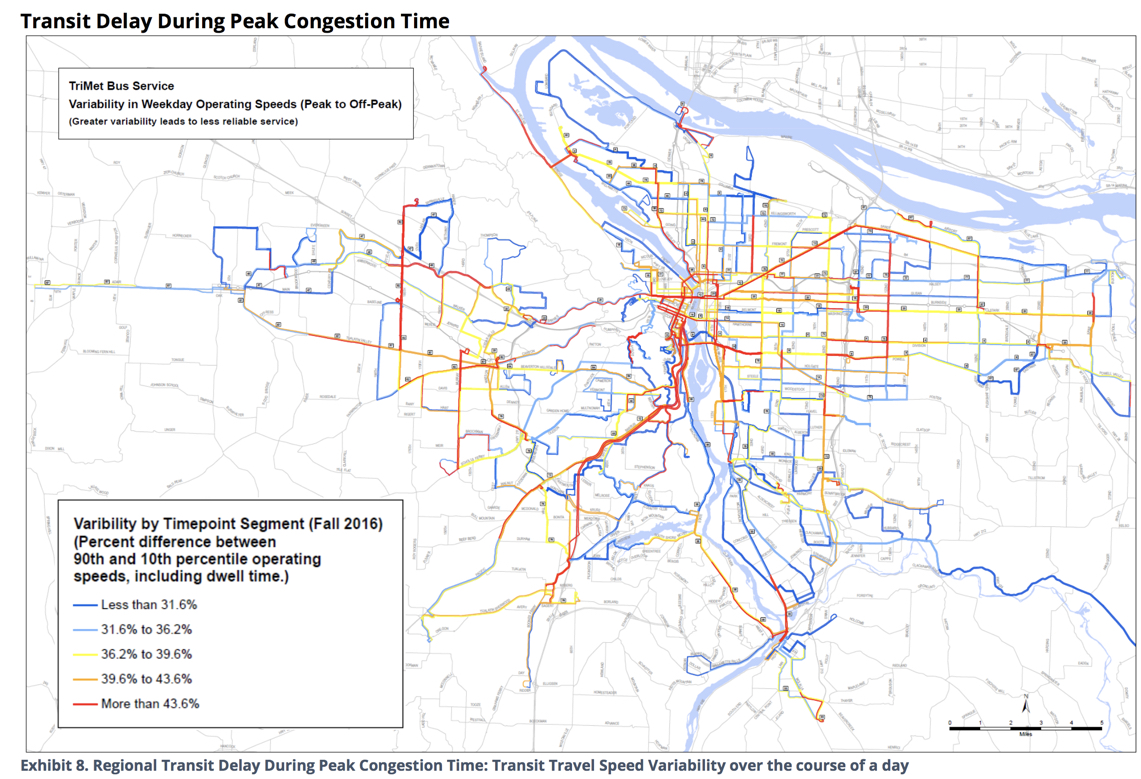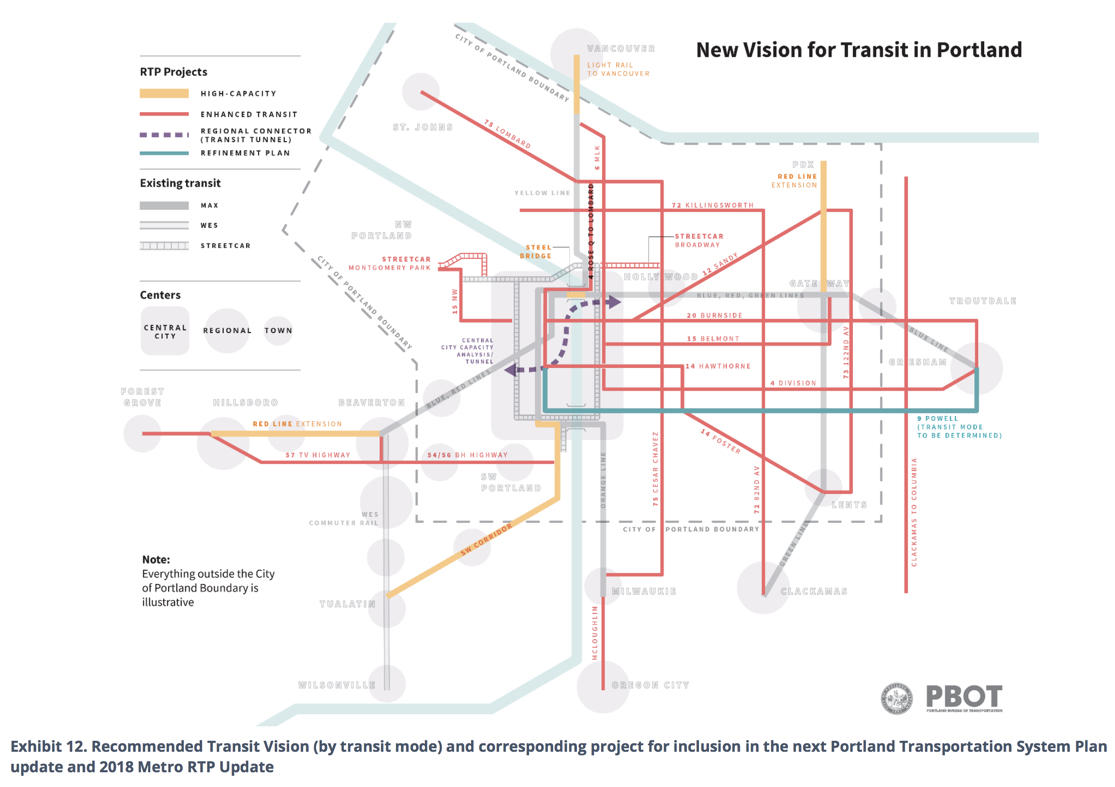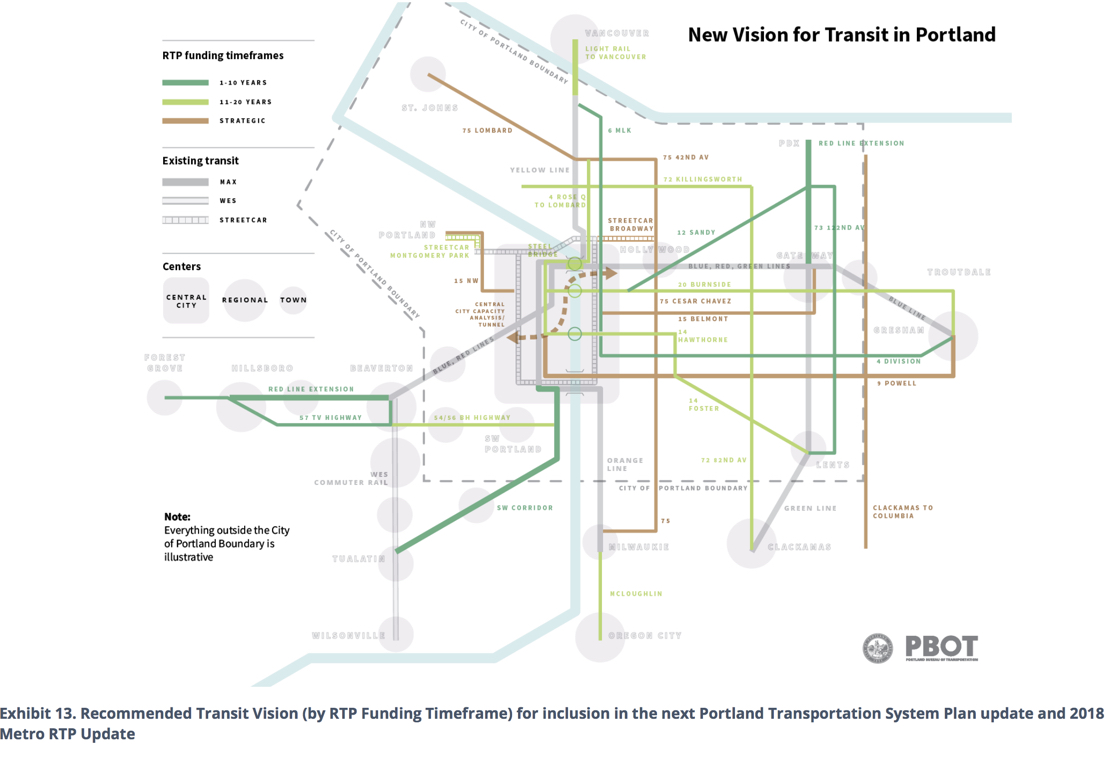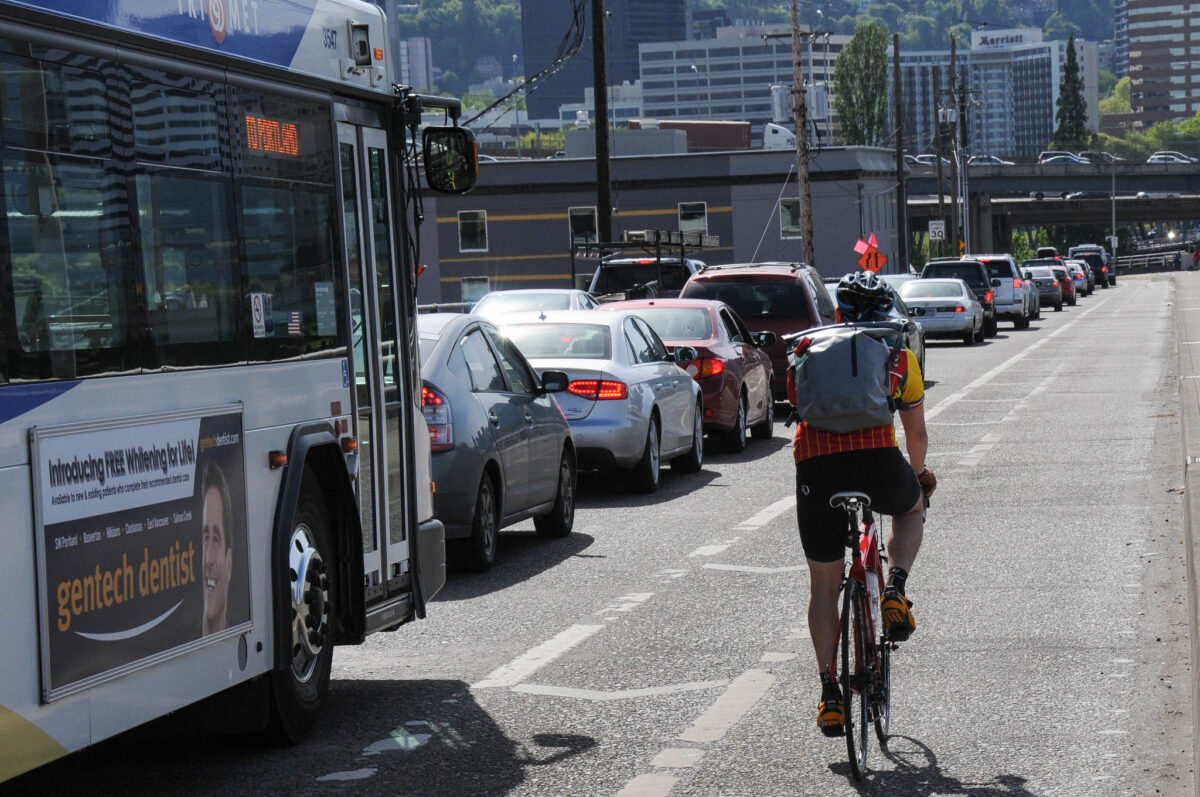
(Photo: Jonathan Maus)
When the Portland Bureau of Transportation (or any government agency for that matter) doesn’t have the public and/or political will to do something they know needs to be done, they will often create a plan. Once adopted, plans give the agency the foundation of policy and information needed to bolster their case both internally and externally. Such is the case with their Enhanced Transit Corridors Plan, which is now complete and headed to City Council for adoption on June 20th.
“If you want to move across the city while taking only your fair share of scarce street space, there are two ways to do it: 1. Use a vehicle that’s not much bigger than your body, like a bicycle. 2. Share a vehicle with lots of other people, like transit.”
— from the executive summary
Last month we shared PBOT’s new guidebook on protected bike lane designs that will help its engineers and planners build more of them. On Monday we shared the Bureau of Transportation’s plans to hasten the development of streets with dedicated space for bicycling. And today PBOT has released the final version of its Enhanced Transit Corridors Plan, which we covered in more detail back in March.
Like the Central City in Motion plan, the Enhanced Transit Corridors Plan (ETC) seeks to codify PBOT’s intentions to make significant changes to our streets. These plans take on extra significance because the future they envision — more space for cycling and buses — will lead to less space for driving. This required change is such a dramatic shift that PBOT put extra effort into the narrative framing of the ETC Plan. In fact, they hired noted transit expert Jarrett Walker to write the executive summary.
Here’s the prologue, which comes after a page with the words, “Portland faces a crisis of freedom and opportunity,” in all caps (emphasis theirs):
Freedom means freedom to choose. We want to choose our careers, schools,friends, groups to belong to, and places to shop. You can also use the word opportunity to describe those same things.
But we have choices and opportunities only if we can get to them. Our crisis is that the places we need and want to go to are becoming harder to reach.
The city is growing denser, and density means more people trying to travel down every major street.
But the space available for travel can’t grow with population. The options for expanding travel space – widening roads or building tunnels and viaducts – cost a fortune and sometimes damage our city. Mostly we have to get better at sharing the space we have.
Advertisement
The summary then spells out the basic math that too much single-occupancy driving simply doesn’t fit in Portland (both figuratively and literally). One of my favorite passages asks, “So how can we share space?” and then says, “If you want to move across the city while taking only your fair share of scarce street space, there are two ways to do it: 1. Use a vehicle that’s not much bigger than your body, like a bicycle. 2. Share a vehicle with lots of other people, like transit.”
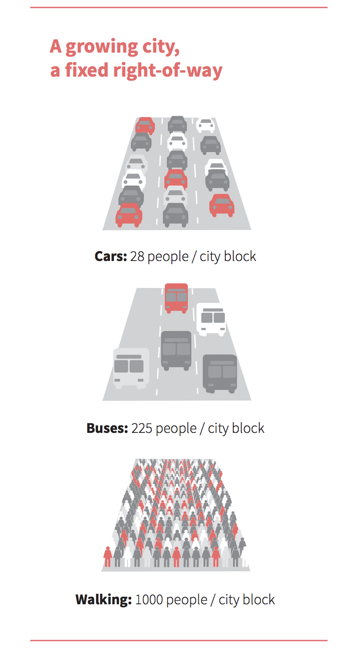
I love this direct talk. Finally PBOT is not beating around the bush when it comes to the truth about driving’s impact on all Portlanders. The storytelling in the ETC plan is great, and storytelling will be an increasingly crucial part of PBOT’s job as we push forward into peeling people’s hands off their steering wheels.
In this plan, PBOT isn’t only sharing hard truths about how we get around. They offer candid self-reflection about their role in creating the mess we’re in. They accept blame for the two main causes of bus delays. “On traffic congestion and friction, though, the City of Portland must lead. These kinds of delay are caused by street design, traffic signals, and sometimes law enforcement. The City mostly controls these things, so the City must lead in addressing them.”
How will PBOT lead on these issues? The plan is also open and realistic about how hard that will be.
“The street design changes needed to improve speed and reliability have monetary costs, but the real challenge is the impact on other modes of travel and other street uses. Where transit needs more space, it will most likely take space that’s now being used for another purpose, often as traffic lanes, signal time or on-street parking. There are many ways to mitigate these impacts but in most cases, there is no way to avoid them entirely.”
The summary then gets into the City’s modal hierarchy, a.k.a. the “transportation strategy for people movement, which was adopted as policy 9.6 in the 2035 Comprehensive Plan. That hierarchy says when it comes to which modes have the most heft when it comes to making decisions about doling out right-of-way walking comes first. Then cycling, then transit, than various types of shared vehicles like AVs. Single-occupancy cars are at the very bottom.
The ETC Plan isn’t all just a paean to transit and rant against the negative impacts of too much driving, it also has concrete recommendations, a design toolbox, and maps that illustrate exactly where and how Portland can make transit work better. The hard work of actually reducing driving space to make way for better transit is still to come; but this is a start.
And when combined with record amounts of new revenue, a stronger footing for protected bike lanes, and a long list of street projects already in the queue, PBOT is poised to finally get its groove back. Here’s to hoping.
If better transit would impact your life, please consider showing up to City Council on June 20th or sending in written testimony to the Council Clerk at cctestimony@portlandoregon.gov with a cc to etcplan@portlandoregon.gov.
— Jonathan Maus: (503) 706-8804, @jonathan_maus on Twitter and jonathan@bikeportland.org
Never miss a story. Sign-up for the daily BP Headlines email.
BikePortland needs your support.


